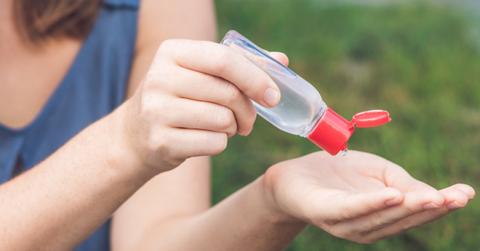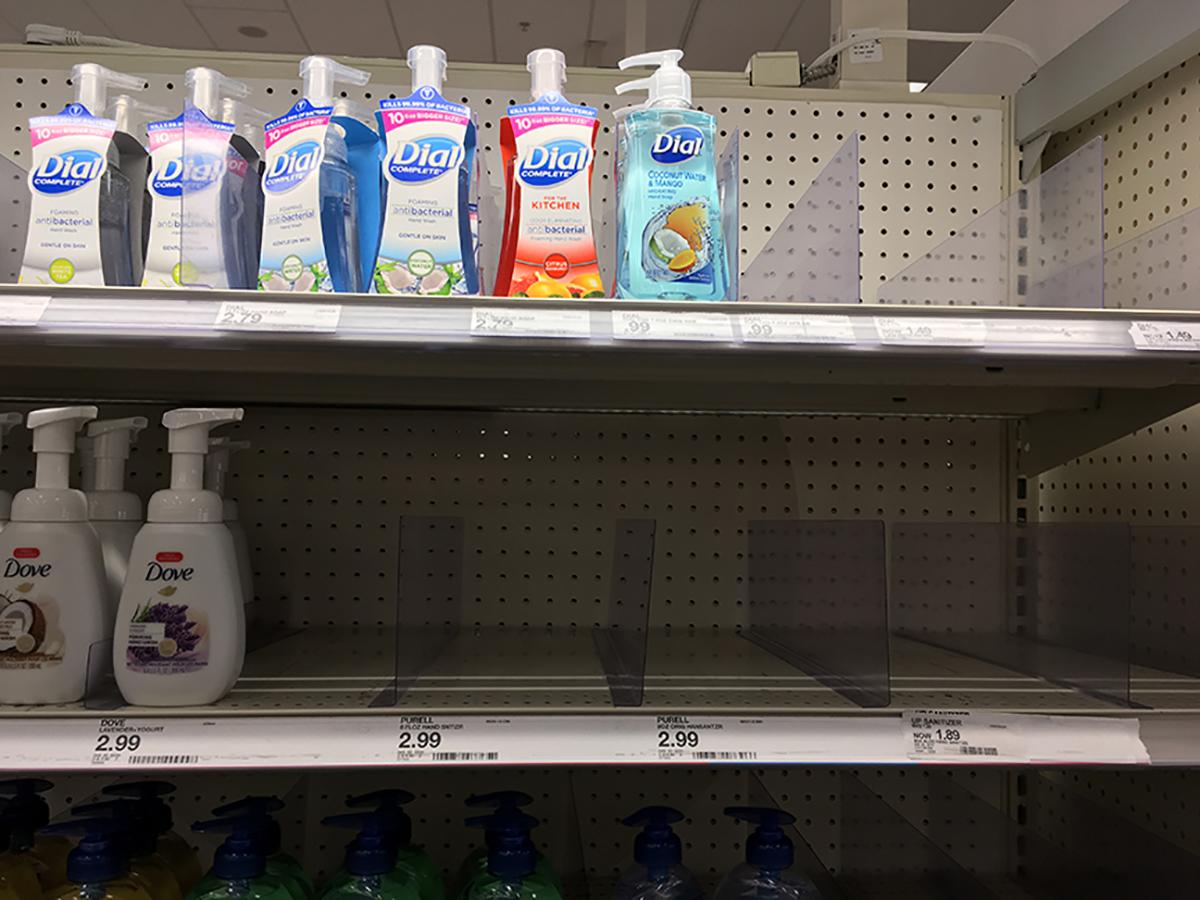Here’s How You Can Make Your Own DIY, Zero-Waste Hand Sanitizer
Of course, hand sanitizer should only be used when soap and water isn't a viable option.
Updated March 31 2020, 11:31 a.m. ET

As the number of coronavirus cases continues to increase in not only the United States, but also all over the world, you’ve likely noticed a shortage of hand sanitizer in your city or online. If you aren’t willing to pay the exorbitant amount for the price-gouged hand sanitizer being sold online, fear not: Both the World Health Organization (WHO) and the United States’ Centers for Disease Controls and Prevention (CDC) have reassured Americans that traditional hand washing — with soap and water, for at least 20 seconds — is still your best bet.
However, when that isn’t available, the CDC says the second-best option to stay safe and protect yourself from COVID-19 is an alcohol-based hand sanitizer with at least 60 percent alcohol. If you didn’t get your hands on hand sanitizer, not all hope is lost: You can make your own at home, using ingredients that you may already have or could have an easier time finding in the stores (not to mention, it’s a great zero-waste alternative for all the plastic you’d be adding in your life).
Please note: We’re neither doctors nor experts, and you should consult with your own medical professional or guidelines provided by the CDC before taking any steps when it comes to your health.

How to Make Your Own Hand Sanitizer With Rubbing Alcohol and Aloe
To make your own hand sanitizer, you need a few ingredients (which vary based on whose recipe you’re following). The most simple recipe calls for just two ingredients — isopropyl alcohol (ideally 91 or 99 percent alcohol but anything above 60 percent would work) and aloe vera. Some people add essential oils for scent, though it’s totally optional (tea tree oil is a natural antibacterial).
To make this recipe, combine one cup of the rubbing alcohol with a half a cup of aloe vera and as many as 15 drops of essential oil in a mixing bowl. Whisk together to combine the ingredients using a sterilized utensil. Since this recipe will create a gel, it’s best to use a container like one you’d use for travel shampoo or conditioner, or reuse a container from store-bought hand sanitizer.
The higher percentage of alcohol will make for more effective hand sanitizer — but it’ll also create a more abrasive product for your hands. Many people have suggested using vodka in place of rubbing alcohol, though experts (and some brands themselves) have warned against this practice, as the alcohol content likely won’t be high enough to do the necessary effort to eliminate germs.
How to Make Your Own Hand Sanitizer, Per the WHO
The WHO put out several different recipes — intended for both small batches and large batches — that can be made in place of store-bought hand sanitizer. While the recipe above will create a gel product, this one will make more of a liquid, so a reusable spray bottle will be your best bet as far as storage goes.
To make their variation of homemade hand sanitizer, you’ll need the following ingredients: 99.8 percent isopropyl alcohol, 3 percent hydrogen peroxide, 98 percent glycerin, and sterile or distilled water. Since the recipe will recreate a large batch (by large, we mean more than two gallons), we used Popular Science’s suggestions to adapt to a smaller batch.
Per the WHO’s directions, take one cup of alcohol in a medium-sized container with a pouring spout; then, add 1 tablespoon of hydrogen peroxide and 1 teaspoon of glycerin and stir in the container. Once those ingredients are thoroughly combined, add in a quarter-cup, 1 tablespoon, and 1 teaspoon of the distilled or sterile water and stir. You should end up with just slightly more than a cup of hand sanitizer, which can be put in a sterilized spray bottle.
Though desperate times could potentially call for desperate measures — aka, making your own hand sanitizer — there are some precautions that should be taken when you’re making your own hand sanitizer. One professional compounding pharmacist warned against making your own hand sanitizer, explaining that it could be particularly finicky to combine these ingredients, and you could easily be doing more damage than good in the event that it is either ineffective or too harsh.
Additionally, if you do see people price-gouging online or in person, you can probably report it depending on the marketplace and local jurisdiction (New York City, for example, has made it easy to file reports regarding price-gouging incidents).
Of course, as the CDC explains, using soap and water — when soap and water is readily available — is always preferred to hand sanitizer, whether it’s store-bought or homemade.